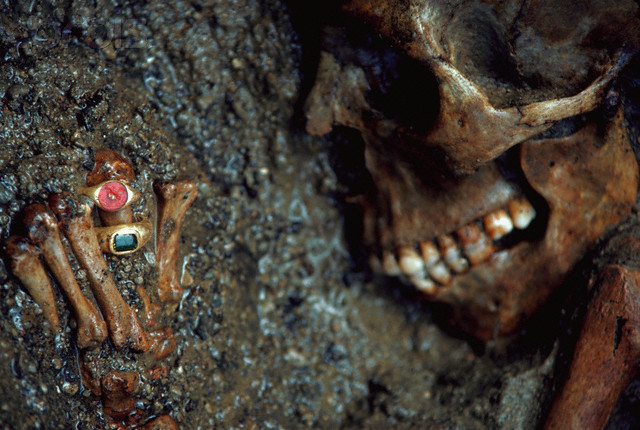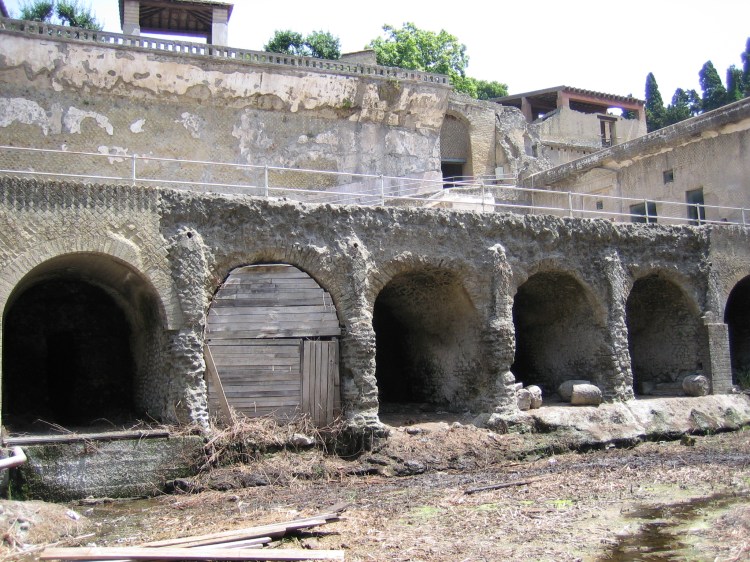
Herculaneum was a prosperous resort town inhabited in summer by well-to-do Romans and their servants, in addition to the year-round resident.
When the Vesuiuv erupted in 79 A.D. they were all there for the season: aristocrats and slaves, young and old.
They fled the volcano’s eruption at the very last minute and were caugh on the beach by the flow of volcanic material.
Since few skeletons had ever been found in the town itself, historians long believed that the population had escaped the desctruction of the city.
It was a great surprise when the skeletons were accindentally found at the beach front of the adjacent chambers in the spring of 1982.
These skeletons are in good to excellent condition because they had remained in an environment of unchanging temperature and humidity, buried under 20 meters of volcanic material for some 1900 years.
The skeletons of Herculaneum are of utmost importance to anthropologist and historians, because they constitute a unique population: Romans of the time generally cremated their dead.




Reblogged this on and commented:
NICE EVIDENCE
LikeLike